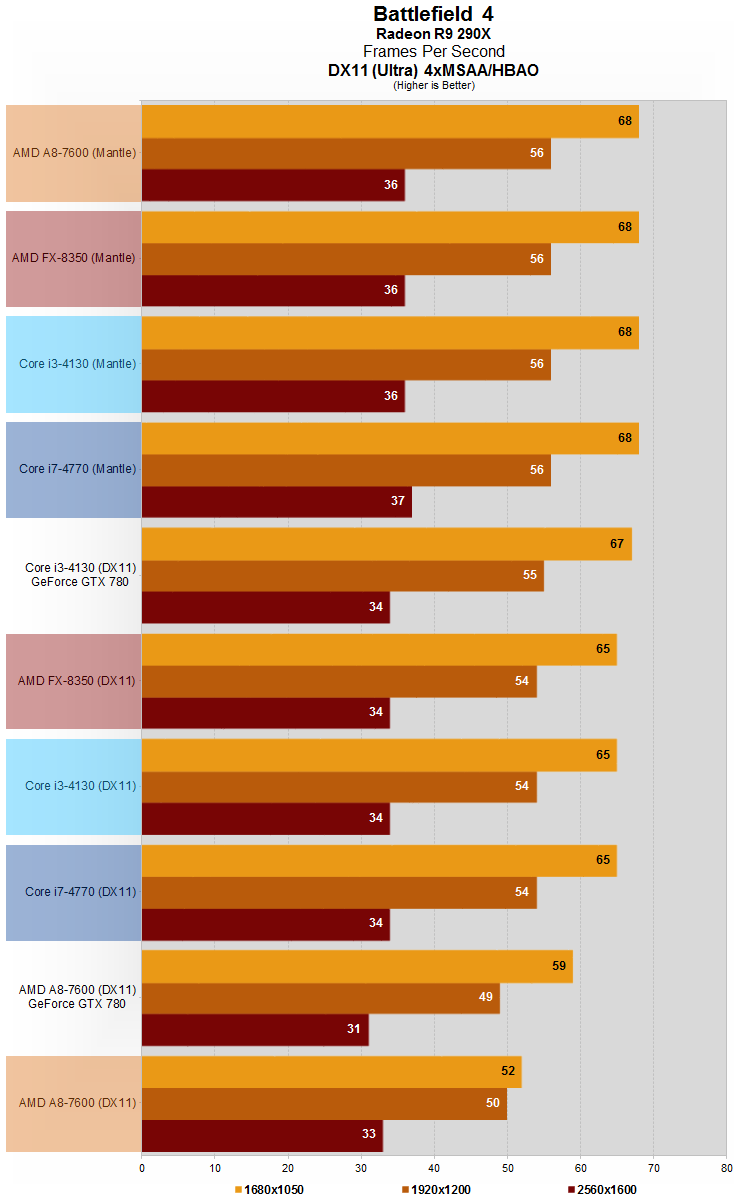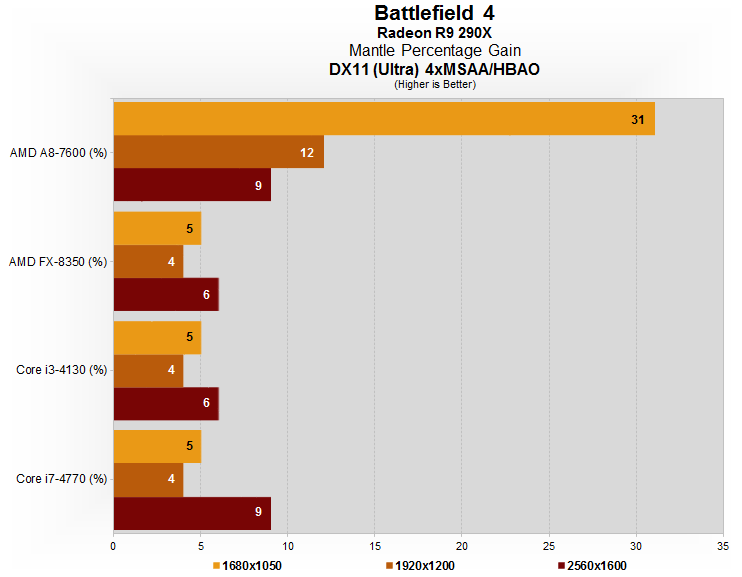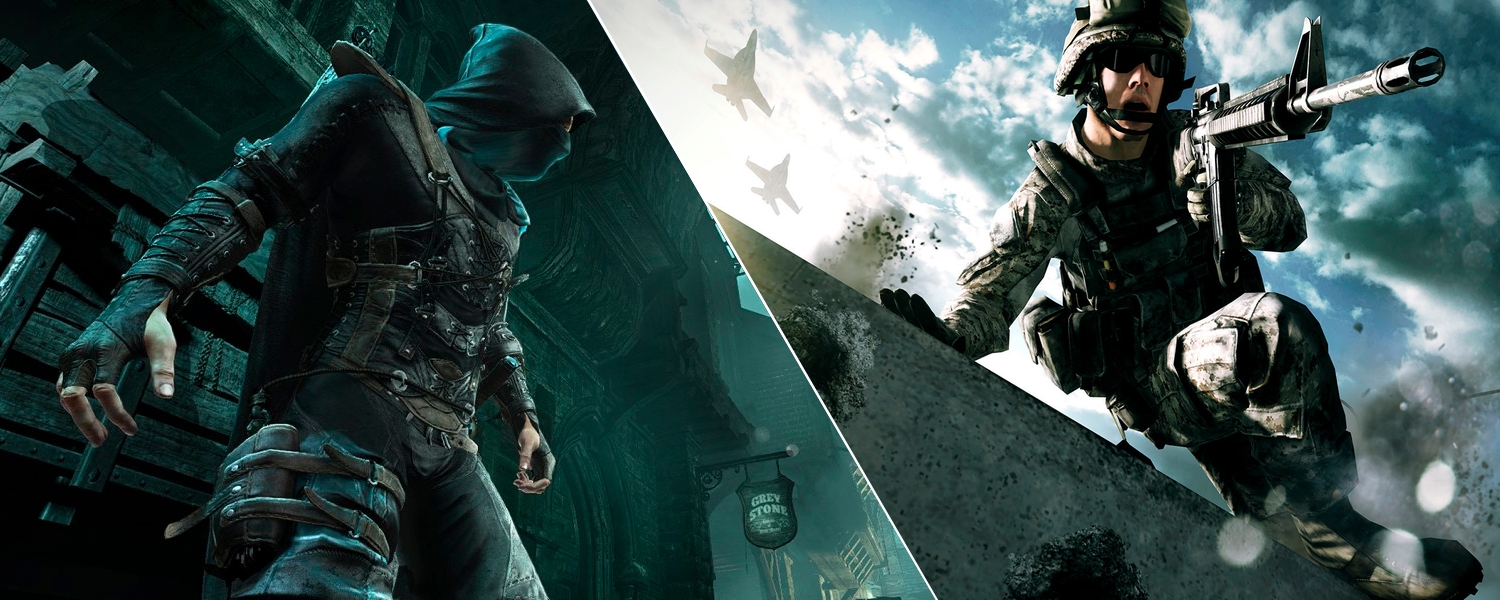Battlefield 4 Mantle

First up, the R9 290X was tested at three resolutions using four processors and the GTX 780 was thrown in for comparison using the Core i3-4130 and A8-7600.
Using DirectX 11 instead of Mantle, the R9 290X was limited to 34fps at 2560x1600 which was achieved when using the FX-8350, Core i7-4770 and Core i3-4130 processors. The A8-7600 was just a fraction slower at 33fps.
With Mantle enabled, the frame rate at 2560x1600 was increased to 37fps when using the R9 290X with the Core i7-4770 and 36fps with the other three processors.

The above Mantle performance gains are based on what we saw when playing Battlefield 4 on the R9 290X at three resolutions across four processors. When playing at 2560x1600 and using the Core i7-4770 and A8-7600 we recorded a 9% boost while the FX-8350 and Core i3-4130 saw a 6% gain.
For the most part, when using the R9 290X we saw less than a 10% performance gain with Mantle, 5% being more accurate. However, there was at least one situation with the A8-7600 at 1680x1050 where Mantle produced a massive 31% performance increase from 52fps to 68fps.
However, that is rather pointless because no one is going to run a $600+ R9 290X at 1680x1050 and they certainly aren't going to combine it with the ~$120 A8-7600.

Next we installed an R9 280X with the same CPUs as well as the same quality settings and resolutions while the GTX 760 was tested with the Core i3-4130 and A8-7600 for comparison purposes.
This time AMD's API has very little to offer at 2560x1600 as we saw the same 28fps when using the Core i7-4770, Core i3-4130 and FX-8350 with Mantle and DirectX 11. At 1920x1200, where we suspect most R9 280X gamers play, Mantle offered 1-2fps more performance. The biggest gains were seen at 1680x1050 where the CPU becomes a greater bottleneck.

As before, the only significant results were seen at 1680x1050 where Mantle offered 18% more frames with the FX-8350, Core i3-4130 and Core i7-4770, while the A8-7600 was 24% faster.
At 1920x1200 – where we really wanted to see more performance – the FX-8350 and Core i3-4130 were just 5% faster while the Core i7-4770 was only 2% faster with Mantle. The A8-7600 saw a 13% gain at 1920x1200 as it hit the same 45fps as the other three processors. Again, realistically we are looking at a 5% increase.

The R7 260X could certainly use a performance bump but Mantle doesn't seem to help when using low-end graphics cards. There is little to be gained since all the processors tested are more than capable of keeping up with the R7 260X's max.
That said, we didn't expect Mantle to make the R7 260X slower, but at 1680x1050 we lost up to 3fps and it was a similar story at 1920x1200, while performance was almost halved at 2560x1600 with Mantle offering 13-14fps and DX11 hitting 22fps.
There isn't a Mantle performance graph for the above results as Mantle was slower in every case tested with the R7 260X. We first thought that maybe there was an issue with our card or perhaps there was a driver issue, but AMD's own results show the R7 260X delivering less than 3% more performance.
